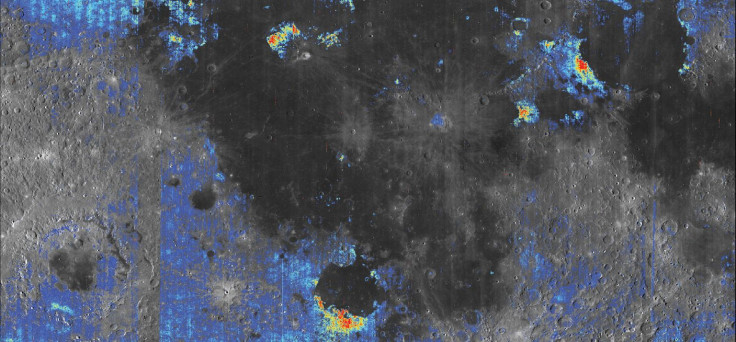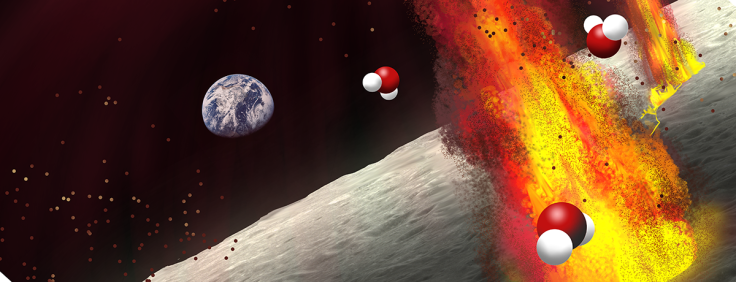The Moon Has As Much Water In Its Mantle As Earth’s Interior

It was only in 2008 that scientists began changing their view of the moon as a celestial body whose interior had been largely depleted of water and other volatile compounds. And new study of satellite data of volcanic deposits across the lunar surface suggests parts of the moon’s mantle have as much water as Earth’s interior.
The 2008 turnaround in the scientific view came about as a result of analyzing the volcanic glass beads brought back from the moon by the Apollo 15 and 17 missions. Some of those beads had trace amounts of water, and another examination in 2011 showed the amount of water to be similar to some basalts on Earth, suggesting the similarity in the water content in the mantle of both Earth and its only natural satellite.
Read: Underground Ice Deposit On Mars Enough To Fill Lake Superior
But the samples collected by the Apollo missions were not representative of the entirety of the moon’s interior, and that’s where the new study of satellite data comes in.

Ralph Milliken, lead author of the new research and an associate professor at Brown University in Providence, Rhode Island, said in a statement Monday: “By looking at the orbital data, we can examine the large pyroclastic deposits on the moon that were never sampled by the Apollo or Luna missions. The fact that nearly all of them exhibit signatures of water suggests that the Apollo samples are not anomalous, so it may be that the bulk interior of the moon is wet.”
The way scientists use satellite data to study the composition of bodies in space is by looking at spectral data and measuring the light that bounces off the surface. Different minerals and compounds absorb different wavelengths of light, so analyzing the light that is reflected gives a good idea of what the surface is made of.
However, in the case of spotting water on the moon, there was a difficulty. The heating of the lunar surface during the day time, especially the areas where the volcanic deposits are located, means the spectrometers also read the heat coming off the surface, and the thermal radiation is at the same wavelengths used to look for water. So Milliken and the paper’s co-author Shuai Li had to first separate the heat signature from the readings to arrive at their conclusions.
The researchers created a thermal correction, based on measurements of the Apollo samples and a detailed temperature profile of the lunar areas they were looking at. They applied this correction to orbital data captured by the Moon Minerology Mapper, an imaging spectrometer aboard India’s Chandrayaan-1 lunar orbiter.
“The distribution of these water-rich deposits is the key thing. They’re spread across the surface, which tells us that the water found in the Apollo samples isn’t a one-off. Lunar pyroclastics seem to be universally water-rich, which suggests the same may be true of the mantle,” Milliken said in the statement.
The findings have implications for theories of how the moon formed. A dominant view is that it was formed in the early years of the solar system’s history when an object about the size of Mars slammed into Earth, and the resulting debris coalesced into the moon. But by this theory, the heat of the impact would have left no hydrogen needed for the formation of water, leading scientists to conclude the interior of the moon must be dry.
Read: Water Ice Is Everywhere On Dwarf Planet Ceres
“The growing evidence for water inside the Moon suggest that water did somehow survive, or that it was brought in shortly after the impact by asteroids or comets before the Moon had completely solidified. The exact origin of water in the lunar interior is still a big question,” Li said in the statement.
Another possible implication of the finding is for future lunar missions. If the water from the moon’s interior could be extracted, it would mean explorers won’t need to lug large quantities of it from Earth, Li said.
The research paper by Milliken and Li, and funded by NASA, appeared Monday in the journal Nature Geoscience.
© Copyright IBTimes 2024. All rights reserved.











